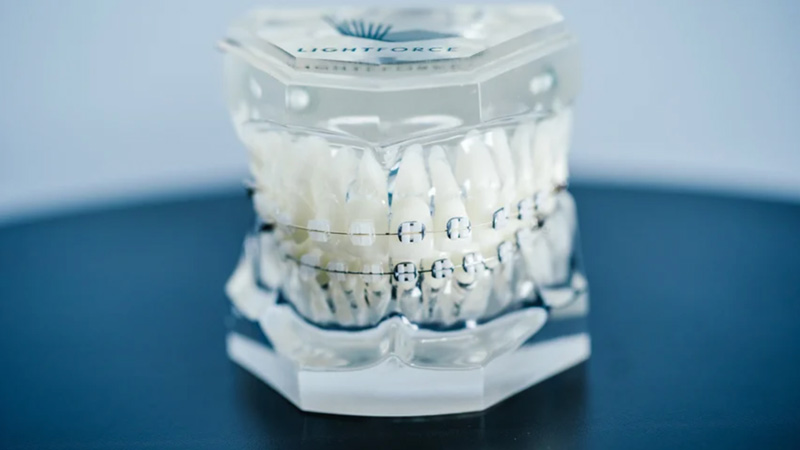Comprehensive Overview to Orthodontics Treatments for Remedying Oral Imbalances
In the realm of orthodontics, the trip to achieving a perfectly lined up smile entails a myriad of procedures customized to fix oral imbalances. From conventional dental braces to unnoticeable aligners and also medical choices, the area of orthodontics offers a series of remedies to deal with differing levels of dental irregularities. Recognizing the complexities of each treatment, including their mechanisms, benefits, and possible drawbacks, is vital in making educated decisions regarding one's orthodontic therapy. As we browse via the extensive overview to orthodontic treatments for fixing oral imbalances, the intricate details of each technique will certainly unfold, clarifying the course toward a functional and harmonious oral alignment.
Orthodontic Procedures Summary

Regular adjustments and tracking are important parts of orthodontic therapy to make sure development is on track and to make any essential alterations along the method. By going through orthodontic treatments, people can not just achieve a straighter smile yet also improve their general dental wellness and function.
Conventional Dental Braces: Just How They Function
When thinking about orthodontic treatments for dental imbalances, typical dental braces stand out as a time-tested approach for correcting teeth placing. Typical dental braces contain brackets, cords, and bands that interact to apply continual stress on the teeth, slowly moving them into the desired placement. The braces are connected to the teeth using an unique adhesive, and the cables are threaded via the braces. By changing the stress of the cables, orthodontists can manage the direction and force applied to each tooth, assisting them into correct alignment over time.
As pressure is used to the teeth through the dental braces, the bone bordering the teeth is improved to support the new tooth positions. People will require regular changes at the orthodontist's office to guarantee the dental braces continue to use the appropriate pressure for efficient teeth movement.
Unnoticeable Aligners: Disadvantages and pros
These clear, tailor-made trays are practically unnoticeable when worn, making them an appealing choice for individuals looking for a more aesthetically pleasing orthodontic treatment. People can get rid of the aligners prior to consuming or cleaning their teeth, minimizing the threat of food obtaining stuck in the appliance and streamlining the cleansing procedure.

Surgical Orthodontic Options
Surgical treatments in orthodontics present practical alternatives for addressing intricate oral misalignments that might not be successfully dealt with via conventional orthodontic therapies. While undetectable aligners and traditional braces can correct lots of orthodontic issues, certain situations need medical treatment to attain optimal outcomes. Surgical orthodontic choices are typically recommended for serious malocclusions, significant jaw inconsistencies, and instances where the underlying bone framework requires modification to attain appropriate placement.
One usual surgical orthodontic procedure is orthognathic surgery, which involves repositioning the jaws to fix functional problems such as trouble speaking or chewing. This surgical procedure is often performed in cooperation with an orthodontist that helps align the teeth prior to and after the treatment. Surgical orthodontics may also entail procedures to reveal affected teeth, get rid of excess gum tissue, or improve the jawbone to develop an extra harmonious facial account.
Before taking into consideration surgical orthodontic options, people undertake an extensive examination to establish the necessity and possible benefits of such interventions. orthodontics. While surgical treatment may appear complicated, it can considerably boost both the feature and aesthetic appeals of the smile in situations where standard orthodontic therapies drop short
Retainers and Post-Treatment Treatment

Post-treatment care includes following the orthodontist's guidelines carefully. This may include correct dental health practices, participating in follow-up consultations, and wearing the retainers as recommended. Failing to conform with post-treatment treatment guidelines can lead to relapse, where the teeth progressively move back in the direction of their original settings. Consistent retainer wear, great dental hygiene, and normal dental examinations are important for keeping the results achieved through orthodontic surgical procedure and making certain the lasting security of the corrected oral positioning.
Final Thought
In verdict, orthodontic procedures offer look at here various options for remedying dental misalignments. Surgical orthodontic alternatives are available for more extreme imbalances. Overall, orthodontic treatments can properly improve oral health and wellness and visual look.
As we navigate via the thorough guide to orthodontic treatments for remedying oral misalignments, the detailed information of each method will unravel, shedding light on the course toward a harmonious and functional oral alignment. - aligners
One of the most common orthodontic treatments is the usage of braces, which are composed of metal braces and wires that apply mild stress to slowly change teeth right into the wanted placement.When considering orthodontic therapies for dental imbalances, typical braces stand out as a time-tested technique for fixing teeth positioning. Additionally, undetectable aligners may not be ideal for intricate orthodontic problems that need even more considerable teeth motion, as they are typically advised for mild to modest instances. Retainers are tailor-made orthodontic gadgets created to hold teeth in their corrected Continue placements after the conclusion of orthodontic therapy.